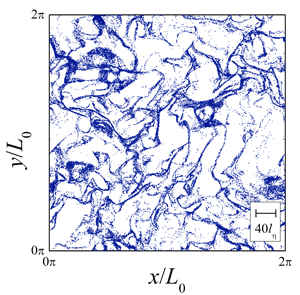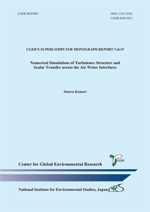KOMORI S.
CGER Reports
CGER’S SUPERCOMPUTER MONOGRAPH REPORT Vol.19
It is of great importance to investigate heat and mass transfer mechanism across the air-sea interface in order to accurately estimate global carbon and heat budget between the atmosphere and ocean by using a general circulation model (ocean-atmosphere coupled model). The air-sea heat and mass transfer is affected by some factors such as swell, droplets and bubbles due to wave breaking, and rainfall. This monograph report collects a series of our published papers on the effects of some factors on air-water heat and mass transfer.
Chapter 1 contains the direct numerical simulation (DNS) of wind-driven air-water turbulence. Figures 1 and 2 show that organized turbulent motions are generated below the wavy air-water interface by wind shear and how scalar (heat and mass) is transferred by the organized motions (surface renewal eddies). In Chapter 2, heat and mass transfer mechanism across the sheared air-water interface is clarified through both DNS and laboratory experiments. The results show that the scalar transfer coefficient against the free-stream wind speed does not depend on the fetch. The empirical correlation between the scalar transfer coefficient and the free-stream wind speed suggests that the global air-sea heat and mass exchange rates are larger than those predicted by previous bulk transfer models.
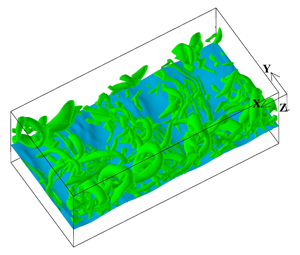
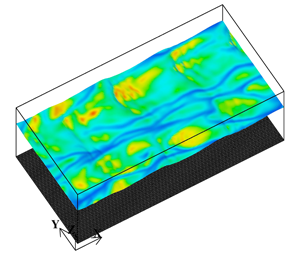
Air-sea heat and mass transfer is affected not only by wind shear but also by some factors such as swell, rainfall, dispersing droplets and entrained bubbles. Chapter 3 describes the effects of swells on the turbulence structure and drag over/on the wavy interface by applying DNS to air turbulence on wavy walls. The results support our experimental fact that parallel swell reduces the mass transfer across the wind-driven wavy air–water interface.
Chapter 4 estimates the rainfall effects on air-sea CO2 transfer by means of DNS of a droplet in a uniform shear flow and laboratory experiments of rainfall. Figure 3 shows that the rainfall effect is very small on the global budget compared to wind-shear effect but it becomes significant in the tropical region.
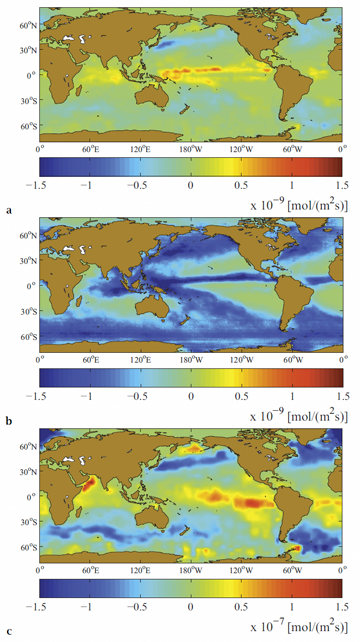
Chapters 5 and 6 show the DNS predictions of drag and lift forces acting on a spherical water droplet and a bubble in homogeneous linear shear air and water flows, respectively. Figure 4 shows the velocity profiles of air and water flows outside and inside a droplet. The results will be useful for estimating the effects of droplets and bubbles on air-sea heat and mass transfer in stormy conditions.

The final Chapter 7 describes the effect of turbulent clustering of water droplets on radiative transfer by means of both DNS of particle-laden homogeneous isotropic turbulence and a radiative transfer simulation. The results show that turbulent clustering in Figure 5 causes the formation of void regions of droplets and hence increases the direct transmittance but this effect is estimated to be negligibly small under the conditions in real clouds.
